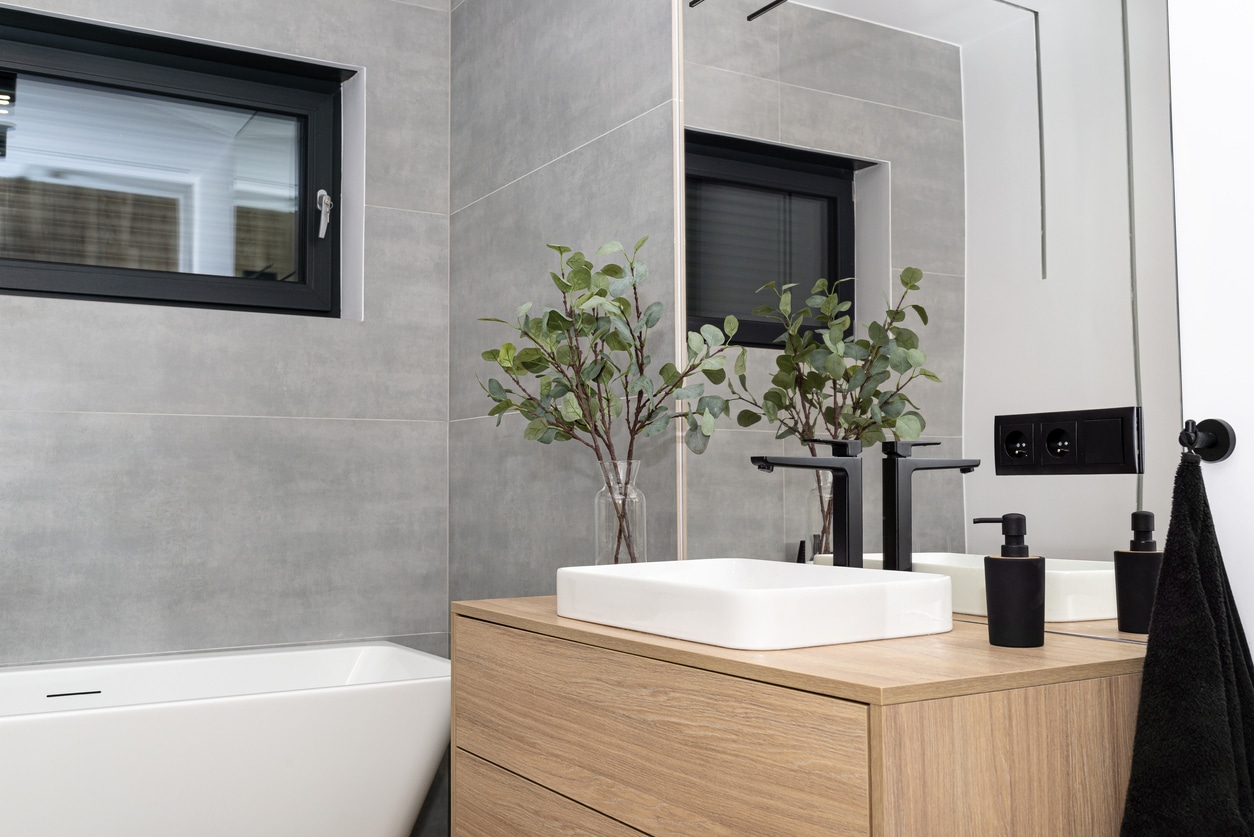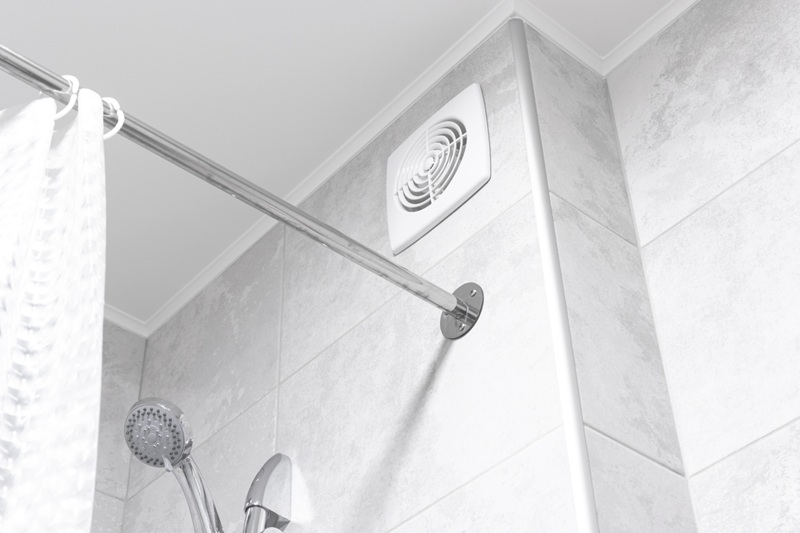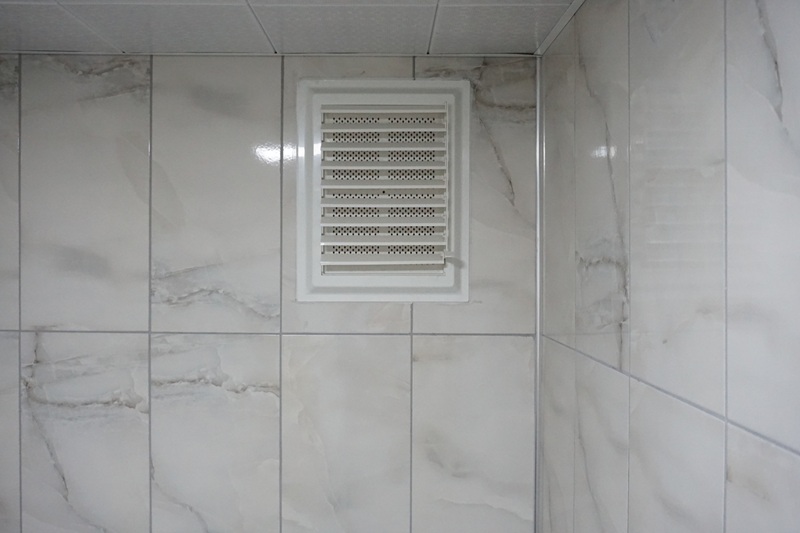
20 Best Bathroom Faucet Brands 2025
Having trouble finding the right faucet brand for your home? With this comprehensive list, we will look at the most
Proper bathroom ventilation is essential for maintaining a healthy and comfortable home. Without adequate airflow, excess moisture accumulates, leading to mold growth, unpleasant odors, and potential damage to walls, ceilings, and fixtures. A well-ventilated bathroom improves air quality and extends the lifespan of materials exposed to humidity.
This guide will cover why bathroom ventilation is crucial, the best methods for achieving it, and how to choose the right ventilation solution for your space. Whether you’re remodeling, upgrading, or troubleshooting an existing system, understanding these fundamentals will help create a safer, more efficient bathroom environment.

Moisture is the number one enemy of any bathroom. Steam condenses on surfaces every time you take a shower or bath, creating the perfect breeding ground for mold and mildew. Over time, this can lead to structural damage, peeling paint, and even health concerns, especially for those with allergies or respiratory issues. Proper ventilation ensures that excess humidity is quickly removed, keeping your bathroom dry and mold-free.
A well-functioning ventilation system prevents moisture from seeping into walls, ceilings, and cabinetry. This not only preserves the integrity of building materials but also reduces the likelihood of long-term maintenance issues, such as warped wood, rusted fixtures, and deteriorating grout.
Bathrooms can quickly develop lingering odors, especially if they lack proper airflow. A good ventilation system continuously refreshes the air, removing unwanted smells and preventing musty conditions caused by stagnant moisture. This is particularly important in bathrooms without windows or homes with multiple occupants.
Beyond odor control, ventilation is crucial in maintaining indoor air quality. It prevents the accumulation of airborne contaminants, such as volatile organic compounds (VOCs) from cleaning products, and reduces the risk of respiratory irritation.
Constant exposure to moisture can damage your bathroom’s fixtures, paint, and tile grout. Over time, humidity can cause metal elements like towel racks, hinges, and light fixtures to rust or corrode. Wooden cabinetry and doors may also warp or swell if not adequately protected against moisture buildup.
By ensuring proper airflow, you can prolong the life of these materials and reduce the frequency of repairs or replacements. Investing in the right ventilation system will save you money in the long run by preventing costly damage to your bathroom’s finishes and structural components.
Most local building codes require proper bathroom ventilation through a window or an exhaust fan venting directly outside. Failure to meet these requirements can result in issues when selling your home or completing renovations. Additionally, poor ventilation can create safety hazards, such as excessive condensation on floors, which increases the risk of slips and falls.
To ensure compliance, homeowners should install an appropriately sized exhaust fan and verify that it vents outdoors, not just into an attic or crawl space. Following ventilation codes improves your bathroom’s performance and enhances your home’s overall value and efficiency.
The most effective way to ventilate a bathroom depends on its size, layout, and usage. While opening a window can help with natural airflow, it’s not always sufficient—especially in humid climates or colder months. Whole-house ventilation systems can assist in maintaining overall air quality but may not provide the targeted moisture control that a dedicated exhaust fan offers.
A ceiling-mounted exhaust fan that vents directly outside is the best solution for most homes. It actively removes moisture and odors, ensuring proper air exchange. Choosing the right fan size (measured in cubic feet per minute, or CFM) based on your bathroom’s square footage is key to adequate ventilation.
A ceiling-mounted exhaust fan is the most reliable way to keep your bathroom dry and odor-free. To work effectively, it must vent outside rather than into an attic or wall cavity, where moisture can accumulate and lead to mold problems elsewhere in the home.
When selecting a fan, look for models with energy-efficient motors, built-in humidity sensors, and quiet operation. Modern exhaust fans also have integrated lighting or heater functions for added convenience.
In a small bathroom, natural ventilation and a low-CFM exhaust fan can be effective. If your bathroom has a window, cracking it open during and after showers can help expel humidity. However, relying solely on a window is not always practical, especially in colder climates.
A compact exhaust fan, ideally with an automatic humidity sensor, can help regulate moisture levels even in tight spaces. If space is limited, consider a wall-mounted exhaust fan, which can be installed in exterior-facing walls to provide direct ventilation.
Larger bathrooms require more powerful ventilation to control moisture. A high-CFM exhaust fan (typically 100+ CFM) is recommended for these spaces, ensuring that air circulates efficiently and steam is removed quickly.
Proper ducting is essential for maximizing airflow efficiency. Smooth, insulated ducts with minimal bends reduce resistance and ensure that humid air is effectively expelled outside. In some cases, installing multiple exhaust fans or a multi-speed system can improve coverage in large bathrooms.
An inline exhaust fan or a multi-room ventilation system is the best option for bathrooms with heavy steam production—such as those with walk-in showers or soaking tubs. Inline fans are mounted within the ductwork, typically in an attic or crawl space, and can serve multiple vents, making them ideal for more extensive or multi-use bathrooms.
A multi-room system allows for strategic placement of intake vents, ensuring moisture is drawn directly from problem areas above the shower. These systems also tend to operate more quietly than traditional exhaust fans, making them an excellent choice for homeowners who prioritize both efficiency and comfort.
Bathroom ventilation isn’t just about comfort—it’s a requirement in most building codes to prevent moisture damage and ensure indoor air quality. The International Residential Code (IRC) and Uniform Mechanical Code (UMC) establish ventilation guidelines, including minimum airflow (CFM) standards based on bathroom size. For example, a tiny bathroom (under 50 square feet) typically requires an exhaust fan with a minimum of 50 CFM, while larger bathrooms may need fans rated at 100 CFM or more to remove moisture effectively.
Mechanical ventilation is mandatory for windowless bathrooms. A properly installed exhaust fan must vent outside the home—not into an attic or crawl space—to prevent moisture buildup in hidden areas. In some cases, continuous ventilation systems, such as whole-house exhaust fans, can also help maintain proper humidity levels. Homeowners should verify their ventilation setup aligns with these regulations before installation.
Beyond national codes, bathroom ventilation requirements vary by state and municipality. Some areas enforce stricter energy efficiency standards, requiring fans with automatic humidity sensors or timers to minimize energy consumption. Others have specific ducting regulations to prevent back-drafting or air leakage and ensure that exhausted air is fully expelled outdoors.
Before installing or upgrading a ventilation system, homeowners should check with their local building department to understand permitting requirements. Hiring a licensed contractor can help navigate compliance, ensuring that the installation meets both local and national codes. Skipping this step could lead to costly modifications later, especially if a home inspection reveals non-compliant ventilation.
The shower or bathtub is the primary source of steam and moisture in a bathroom, making it the best location for targeted ventilation. Installing an exhaust fan directly above this area helps capture and remove moisture at the source, preventing condensation from spreading to walls, ceilings, and fixtures. A fan with a humidity sensor is especially beneficial in high-moisture areas, automatically adjusting airflow based on real-time humidity levels.
Proper placement ensures effective moisture control, but ducting must also be considered. Smooth, insulated ducts with minimal bends maximize airflow efficiency and reduce the risk of mold growth or trapped moisture inside the system. An inline fan system with multiple intake points can further enhance ventilation for large showers.
Odor control is just as important as moisture management, and placing an exhaust fan near the toilet helps eliminate odors quickly. A single ceiling-mounted fan can provide adequate ventilation in smaller bathrooms, but larger bathrooms or those with separate toilet enclosures benefit from a secondary vent near this area.
Condensation buildup around the toilet can also be a concern, especially in humid environments. Warm, moist air can cause water droplets on the toilet tank and surrounding surfaces, potentially leading to mildew growth or water damage over time. A well-placed exhaust fan helps mitigate this by maintaining steady air circulation.
Daily grooming activities like handwashing, shaving, and hair drying contribute to bathroom humidity. Placing a ventilation source above the vanity or sink helps remove excess moisture from the air, preventing prolonged exposure to humidity-sensitive materials such as wooden cabinets and countertops.
A fan positioned in this area also helps prevent mirror fogging, making it easier to get ready without constantly wiping down the glass. Some homeowners opt for vanity lights with built-in exhaust fans, providing dual functionality without requiring additional ceiling space.
Bathrooms connected to walk-in closets or laundry rooms require special attention to prevent humidity transfer. Without proper ventilation, warm, damp air from showers and baths can infiltrate these spaces, leading to mold growth on clothing, towels, and stored items. Over time, excessive moisture can cause fabric deterioration and even a musty odor in your wardrobe.
Installing a small exhaust fan inside the closet or laundry area—or ensuring that the main bathroom fan has strong enough airflow to prevent humidity from spreading—helps protect these spaces. A dedicated vent or a slightly open door can also help regulate airflow between rooms.
Positioning an exhaust fan near the bathroom entrance can create a cross-ventilation effect, especially when combined with a slightly open door or window. This setup allows fresh air to flow in, directing moisture and odors outward, improving air circulation.
This placement works best in bathrooms with multiple ventilation sources, such as natural airflow and mechanical exhaust. It also encourages faster drying times after a shower, reducing the chances of lingering humidity in the space. When paired with a quiet, energy-efficient fan, this method offers a discreet yet effective way to enhance bathroom ventilation.
Exhaust fans are the most effective method for bathroom ventilation, and they come in three main types: ceiling-mounted, wall-mounted, and inline exhaust fans. Ceiling-mounted fans are the most common and vent air through ductwork to the outside, making them ideal for most bathrooms. Wall-mounted fans are great for bathrooms that lack attic space, as they install directly into an exterior wall. Inline exhaust fans, placed in the attic or duct system, are best for large bathrooms or those needing ultra-quiet operation, as they can ventilate multiple areas at once.
Proper placement is key when selecting an exhaust fan. Installing the fan near the shower or tub ensures the best moisture removal. If the bathroom is large, multiple fans or an inline system may be necessary for optimal ventilation.
Natural ventilation through windows or passive vents can sometimes be sufficient. Many building codes allow a bathroom to rely on a window instead of an exhaust fan, but the window must be operable, at least 3 square feet in size, and have at least 50% openable area for proper airflow.
Natural ventilation is best suited for bathrooms in dry climates or those that are used infrequently. However, it has limitations: Windows don’t work well in humid, cold, or polluted environments and don’t provide consistent airflow. An exhaust fan is still recommended in high-moisture bathrooms to prevent mold and long-term moisture damage.
Whole-house ventilation systems regulate air quality throughout the home and can benefit controlling bathroom moisture. Heat Recovery Ventilation (HRV) and Energy Recovery Ventilation (ERV) systems continuously replace stale indoor air with fresh outdoor air, helping to balance humidity levels in bathrooms and other rooms.
HRVs are ideal for colder climates, as they recover heat from exhausted air, reducing energy waste. On the other hand, ERVs transfer heat and moisture, making them a great choice for humid climates where excess moisture needs to be managed year-round. These systems are excellent for overall home air quality but are usually used in combination with dedicated bathroom exhaust fans for targeted ventilation.

The power of an exhaust fan is measured in cubic feet per minute (CFM), which determines how much air it can move. A properly sized fan ensures efficient moisture removal and prevents excess humidity buildup. Use the following formula to calculate the ideal CFM:
CFM = (Bathroom Sq. Ft. × Ceiling Height) ÷ 7.5
For quick reference, here are standard CFM recommendations by bathroom size:
Increasing the CFM rating by 50% or more is recommended for bathrooms with high moisture production, such as those with jetted tubs or multiple showerheads.
Bathroom exhaust fans are rated by sones, which measure noise level. A quiet fan makes for a more comfortable experience, especially in master bathrooms or bathrooms near bedrooms.
Inline exhaust fans are a great option for ultra-quiet operation. The fan motor is placed further away in the ducting system.
Modern exhaust fans have energy-efficient and innovative features that improve performance and convenience. ENERGY STAR-rated fans use less power and operate more efficiently, reducing electricity costs while maintaining optimal airflow.
Additional innovative features include:
These features improve convenience and ensure that ventilation always operates effectively, reducing the risk of mold and moisture damage.
Ceiling-mounted fans are the most common type of bathroom ventilation. They are installed directly in the ceiling and vent moisture through ductwork to the exterior. They are highly effective at removing steam and odors and are available in various CFM ratings to match different bathroom sizes.
When choosing a ceiling-mounted fan, consider placement near the shower or tub for maximum effectiveness. Insulated ducting can also help prevent condensation buildup inside the ventilation system, especially in colder climates.
Wall-mounted exhaust fans provide a practical alternative for bathrooms without attic access. These fans are installed directly into an exterior wall, allowing air to be expelled outside without complex ductwork.
Wall-mounted fans are commonly used in older homes or small bathrooms where attic ventilation isn’t feasible. However, because they are closer to the interior space, they are louder than ceiling-mounted fans. Choosing a low-sone model can help reduce noise.
Inline exhaust fans are an ultra-quiet and efficient option. The fan motor is placed remotely in the attic or ducting system rather than directly in the bathroom. This setup reduces noise levels and allows multiple intake vents to be connected to the same fan.
These fans are ideal for large bathrooms, steam showers, and multi-bathroom ventilation systems. They also offer greater flexibility in duct routing and can be paired with humidity sensors for automated moisture control.
For added functionality, exhaust fans with built-in lights and heaters provide ventilation and comfort. These units are beneficial in bathrooms with limited lighting or in colder climates where additional heat is needed after a shower.
While these multi-functional fans are convenient, they require a higher electrical capacity, so it’s important to ensure your bathroom’s wiring can support the additional power load before installation.
Placement is key to getting the most out of a bathroom exhaust fan. The ideal location is as close as possible to the source of moisture—typically above the shower or bathtub. This ensures steam and humidity are quickly pulled out before spreading throughout the bathroom. If the bathroom is large, installing multiple fans or using an inline fan system with numerous vents can provide better coverage.
For toilet areas in larger bathrooms, placing a secondary fan near the toilet helps control odors and prevents condensation from forming on nearby surfaces. In some cases, positioning an exhaust fan near the bathroom entrance can improve cross-ventilation, especially when paired with a slightly open door or window.
The type of ducting used in an exhaust fan system significantly impacts its efficiency and longevity. Rigid ducts (metal or PVC) are preferred because they allow for smooth airflow and minimize resistance, reducing the risk of condensation buildup inside the duct. While easier to install, flexible ducts can trap moisture and debris due to their ridged design, leading to airflow restrictions and potential mold growth.
To maximize ventilation efficiency, ducts should be as short and straight as possible with minimal bends. If bends are necessary, gradual turns rather than sharp angles will reduce airflow resistance. Additionally, insulating ductwork is essential in colder climates to prevent condensation inside the duct, which can lead to water damage.
One of the most common—and worst—installation mistakes is venting a bathroom exhaust into an attic instead of outdoors. When warm, moist air is expelled into an attic, it creates the perfect conditions for mold growth, wood rot, and structural damage. Over time, this moisture can spread, leading to costly repairs and even health hazards due to mold spores.
Instead, all bathroom exhaust fans should vent directly outside through a roof cap, side wall, or soffit vent. The exterior vent should have a backdraft damper to prevent outside air from re-entering. Regularly checking the outdoor vent ensures it remains clear of debris, pests, or blockages.
A bathroom exhaust fan collects dust, lint, and moisture over time, reducing efficiency and leading to overheating. The fan should be cleaned at least every 6 months for optimal performance. A quarterly cleaning may be necessary if the bathroom is used frequently or has high humidity levels.
If the fan becomes excessively noisy, emits a burning smell, or appears sluggish, these are signs that it needs immediate cleaning or possible replacement.
Regular maintenance extends the life of your exhaust fan and ensures it operates at peak efficiency, effectively removing moisture and odors.
If your exhaust fan is more than 10-15 years old, upgrading to a newer, energy-efficient model can improve its performance and reduce your costs.
Venting a bathroom exhaust into an attic traps moisture inside the home, leading to mold growth, insulation damage, and wood rot. The solution is re-routing the exhaust duct to an exterior vent, ensuring moisture is expelled outside.
A too small fan won’t effectively remove moisture, leading to persistent humidity issues. Calculate the correct CFM rating (cubic feet per minute) using the formula:
CFM = (Bathroom Sq. Ft. × Ceiling Height) ÷ 7.5
If the current fan isn’t strong enough, replacing it with a higher CFM-rated model will improve ventilation.
Ducts that are too short, kinked, or clogged restrict airflow, reducing the effectiveness of the exhaust system. To improve performance, check and clean ducts regularly, and if necessary, replace flexible ducting with rigid ducts.
Many people turn off their bathroom fan as soon as they leave, but this doesn’t allow enough time to remove lingering moisture. Ideally, the fan should run for at least 20 minutes after showering. Installing a timer switch or humidity sensor ensures the fan runs long enough to prevent mold growth.
Humidity-sensing fans automatically detect moisture levels and turn on/off as needed, eliminating the need for manual operation. This feature is beneficial in households where people forget to use the fan after showering.
Modern WiFi-enabled exhaust fans allow homeowners to monitor and control ventilation remotely via smartphone apps. Motion-sensing fans automatically activate when someone enters the bathroom, improving efficiency.
A fan should run for at least 20 minutes after a shower to remove moisture effectively. Using a timer switch or humidity sensor ensures proper runtime.
If a window is at least 3 square feet and can open halfway, some building codes allow natural ventilation instead of an exhaust fan. However, a fan is still recommended for consistent airflow, especially in humid or cold climates.
No! Venting into an attic traps moisture, leading to mold growth and structural damage. Always vent outside through a roof, soffit, or wall vent.

Eric is the founder and president of Badeloft USA. He has been the president of Badeloft’s US division for over ten years and oversees all marketing and branding aspects of Badeloftusa.com.
His expertise lies in small business development, sales, and home and bathroom industry trends and information.
Contact us with any business related inquiries.

Free material samples and tub templates

Having trouble finding the right faucet brand for your home? With this comprehensive list, we will look at the most

Reglazing is an excellent way of restoring your old bathtub and making it appear like new. A professional reglaze lasts

So, you’re shopping for a new bathtub and you’ve done your measurements-mapped out the space for installation, but something that

In home design, bathroom privacy often gets overlooked in favor of more glamorous elements like tile choices or statement tubs.
Fill out the form below to request a free material sample
"*" indicates required fields
"*" indicates required fields
"*" indicates required fields